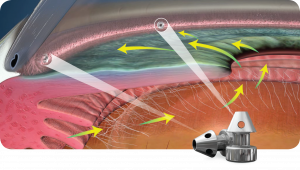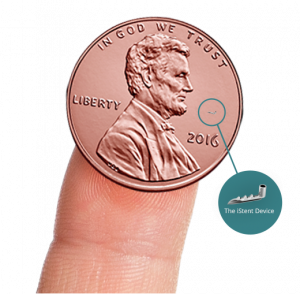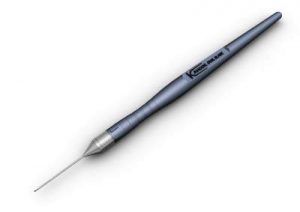Same Day Appointments
- Eye Care
- Eye Conditions
- Astigmatism
- Eye Stye and Chalazion
- Corneal Ectasia
- Corneal Ulcers or White Spots on Your Eye
- Diabetic Eye Diseases & Problems
- Droopy Eyelids (Ptosis)
- Dry Eye Syndrome
- Eye Floaters and Flashes
- Hyperopia (Farsightedness)
- Keratoconus (Bulging Cornea)
- Age-related Macular Degeneration
- Myopia (Nearsightedness)
- Presbyopia (Age-Related Farsightedness)
- Pterygium
- Locations
- Our Team
- Patient Resources
- Contact

 creates two bypasses, or openings, between the front part of the eye and the natural drainage pathway to help restore your eye’s natural ability to drain fluid. Unlike eye drops, the device is designed to work continuously. It has been proven to effectively manage the pressure and prevent the progression of glaucoma. In clinical trials, most patients maintained healthy eye pressure years after their procedure.
creates two bypasses, or openings, between the front part of the eye and the natural drainage pathway to help restore your eye’s natural ability to drain fluid. Unlike eye drops, the device is designed to work continuously. It has been proven to effectively manage the pressure and prevent the progression of glaucoma. In clinical trials, most patients maintained healthy eye pressure years after their procedure. not the patient is a good candidate. iStents are a viable option for any glaucoma patient but are not currently approved for children or other individuals suffering from angle closure glaucoma.
not the patient is a good candidate. iStents are a viable option for any glaucoma patient but are not currently approved for children or other individuals suffering from angle closure glaucoma.